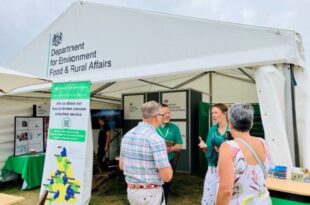https://defrafarming.blog.gov.uk/use-controlled-cutting-of-grasslands-to-promote-wildlife/
Use controlled cutting of grasslands to promote wildlife
The guidance on this page is for SFI pilot participants only. Please visit GOV.UK for the official Sustainable Farming Incentive scheme guidance.
Find out how land managers can increase plant and animal diversity using the controlled cutting of grasslands.
If you’re completing this action as part of the Sustainable Farming Incentive pilot, how you do it is up to you.
The advice on this page can help you get better environmental and business benefits, but you do not have to follow it to get paid.
About controlled cutting
Controlled cutting means cutting grassland at different heights and at different times of the season.
You can use controlled cutting to:
- maintain species-rich grasslands
- maintain and restore grassland where you do not have access to grazing livestock
- provide a mix of long and short grass as habitat for birds, insects and small mammals
Benefits of controlled cutting
Controlled cutting of grasslands will:
- produce a grassland structure with a range of sward heights
- provide more nectar and pollen sources for longer throughout the season
- allow more insect and flowering plant species to thrive
- prevent the removal of all flowering plants in a single cut
How to do controlled cutting
You need to vary the cutting dates and height of each cut. This creates a range of cut and uncut sward heights across the total area of grassland.
Vary the cutting height within each area to avoid leaving large blocks at a uniform height.
Create a rotational cutting plan for each separate grassland site. Leave uncut strips at least 2 metres wide around the edges of fields as a refuge for displaced wildlife.
You can extend the cutting plan to cover the whole summer season. Aim to leave at least half the total area of grassland uncut, left to flower and set seed each season.
Birds, nests and eggs are protected by law. You must check the site before starting work. If you see signs of nesting birds, delay cutting until birds fledge.
Grazing
If you have livestock, you can:
- follow cutting with aftermath grazing
- vary stocking rates to maintain the structure of the grassland
- graze areas that you could not cut earlier in the season
What successful grasslands look like
You’ll see:
- a range of insect and flowering plant species
- a more varied and structured landscape

